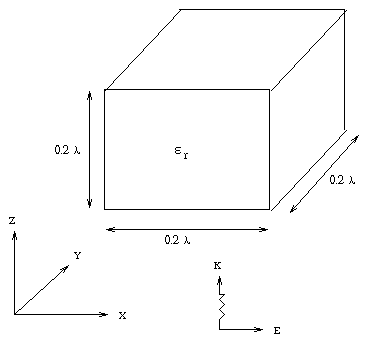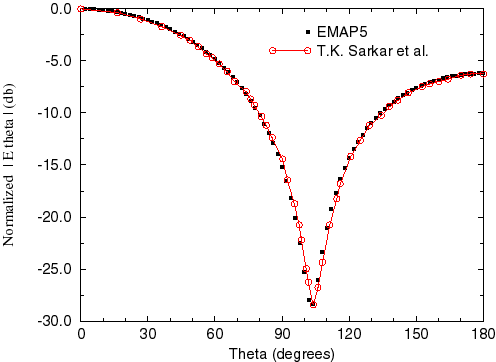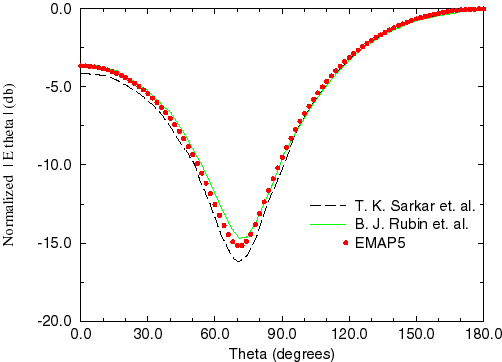First, the relative permittivity of the cube is set to 1-j1000. The frequency of the plane wave is assumed to be 600 MHz. Thus, the length of each side of the cube is 10 centimeters. The input file for SIFT5 is as follows,

unit 1 mm
boundary -50 -50 -50 50 50 50
celldim -50 50 25 x
celldim -50 50 25 y
celldim -50 50 25 z
dielectric -50 -50 -50 50 50 50 1.0 -1000.0
eplane 600 90 0 0 0 1.0
default_out example4.out
The dielectric cube is divided into 64 bricks, then 320 tetrahedra. In Figure 17, the normalized far field obtained by EMAP5 is compared to those calculated in [1][2].
Second, the dielectric constant of the cube is set to
9.0. The "dielectric" line in the input file for SIFT5
needs to be changed as follows,
dielectric -50 -50 -50 50 50 50 9.0 0.0
In Figure 18, the normalized far field obtained by EMAP5 is compared to those calculated in [1][2]. In both cases, the results obtains by EMAP5 agree with the references.


References:
[1] T. K. Sarkar, E. Arvas, and S. Ponnapalli, "Electromagnetic Scattering from Dielectric Bodies," IEEE Trans. Antenna Propagat., vol. 32, pp. 77-85, Jan. 1984.
[2] B. J. Rubin and S. Daijavad, "Radiation and Scattering from Structures Involving Finite-Size Dielectric Regions," IEEE Trans. Antenna Propagat., vol. 38, pp. 1863-1873, Nov., 1990.